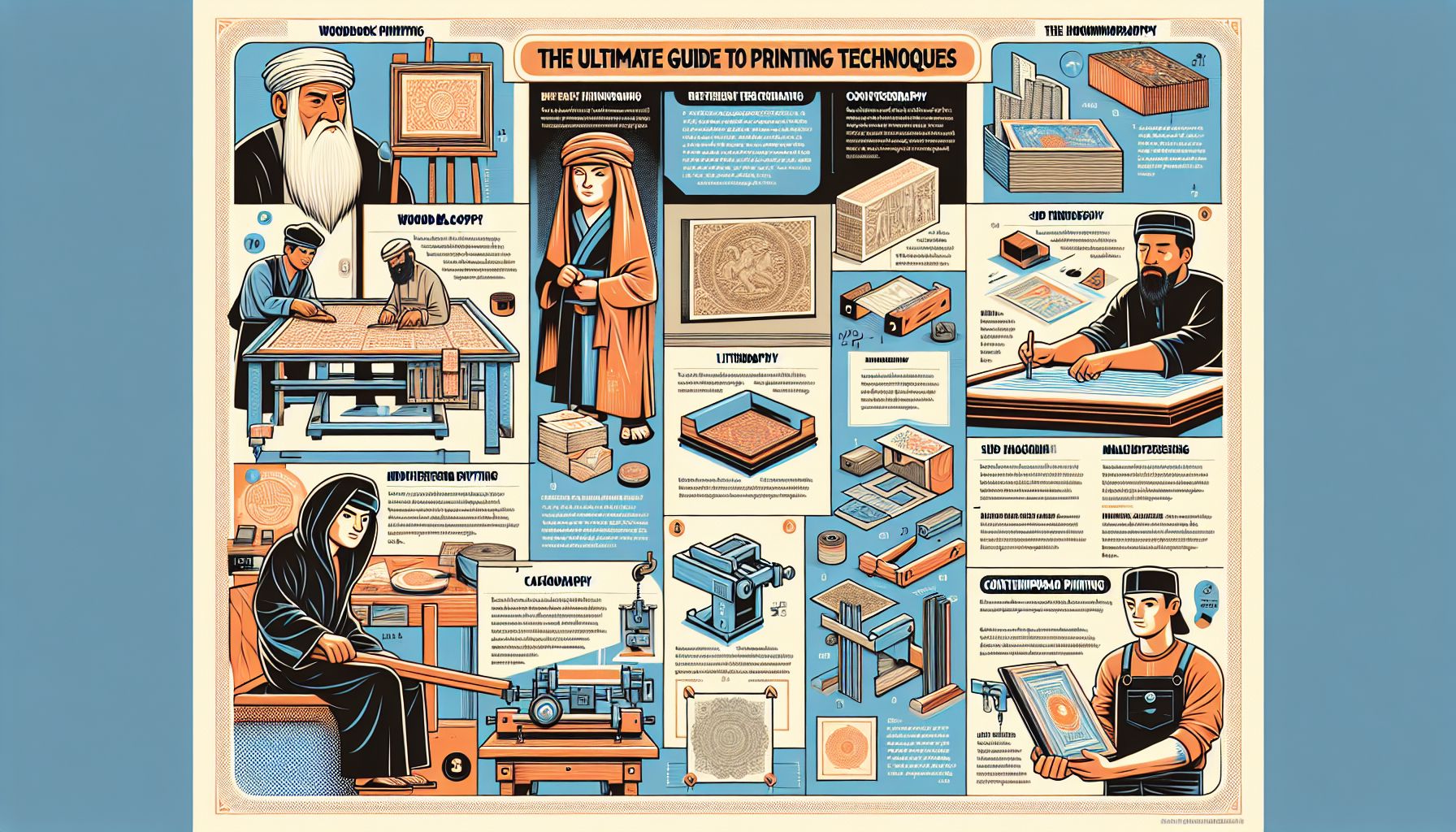The Ultimate Guide to Printing Techniques
Printing is an essential part of modern life. From magazines and flyers to packaging and business cards, we encounter printed materials on a daily basis. But have you ever wondered about the process behind creating these printed wonders? In this article, we will explore various printing techniques used in the industry and their unique characteristics. Whether you’re a designer, marketer, or simply curious about the printing world, join us on this journey to unravel the secrets behind the art of printing.
Introduction to Printing Techniques
Printing techniques have evolved significantly over the years, from ancient forms of block printing to the digital revolution we now experience. Each technique possesses its own distinct features, offering a range of choices to meet different printing requirements. Understanding these techniques empowers individuals and businesses alike to make informed decisions when it comes to selecting the most suitable method for their projects.
Traditional Printing Techniques
1. Relief Printing
Relief printing is one of the oldest and simplest printing methods. It involves carving away the areas that should not receive ink, leaving the raised portions to be inked and transferred onto the desired surface. Examples of relief printing include woodcut and letterpress. While relief printing is known for its ability to produce bold and tactile prints, it is best suited for artwork, bookplates, and limited editions due to its time-consuming nature.
2. Intaglio Printing
Intaglio printing, also known as engraving, is the opposite of relief printing. In this technique, the image is incised or etched into a surface, such as metal or plastic. After the incised area is filled with ink, the surface is wiped clean, leaving ink only in the recessed areas. The image is then transferred onto paper with high pressure. Intaglio printing is favored for its ability to produce intricate details and continuous tones, making it ideal for banknotes, stamps, and fine art prints.
3. Planographic Printing
Planographic printing, also known as lithography, is based on the principle that oil and water do not mix. The image is drawn or transferred onto a smooth surface using oil-based ink or crayons. Then, water is applied to the surface, repelling the ink except where it adheres to the drawn or transferred image. The inked image is then transferred onto paper. Planographic printing allows for complex color reproduction and is commonly used in fine art prints and high-quality commercial printing.
Modern Printing Techniques
4. Digital Printing
Digital printing is a modern printing technique that has revolutionized the industry by enabling direct printing from digital files, eliminating the need for physical printing plates. Digital printers offer great flexibility, allowing for quick turnaround times and cost-effective production, especially for short-run projects. This technique finds application in business cards, flyers, and personalized marketing materials. However, digital prints may not match the vibrancy and durability of traditional printing methods for large or high-quality prints.
5. Offset Printing
Offset printing is the go-to choice for commercial printing and large print runs. This technique involves transferring ink from a plate to a rubber blanket, which then applies the ink to the printing surface. Offset printing offers high-quality, consistent results and supports various paper stocks. It is well-suited for brochures, magazines, newspapers, and packaging materials. While offset printing requires time for setup and plate creation, the speed and cost-effectiveness for large quantities make it an industry favorite.
6. Screen Printing
Screen printing, also known as silk-screen printing, is widely used for its versatility and vibrant color reproduction. This technique involves creating a stencil on a mesh screen and then passing ink through the screen onto the substrate below. Each color requires a separate screen, allowing for precise color control. Screen printing is perfect for textiles, posters, signage, and custom promotional products. While screen printing may not be as efficient for large print runs due to the setup time involved, it offers unique possibilities for designs that require bold colors or special effects.
Conclusion
Printing techniques encompass a vast array of methods, each with its own advantages and limitations. Traditional techniques like relief, intaglio, and planographic printing continue to thrive alongside modern methods like digital, offset, and screen printing. Understanding these techniques empowers individuals and businesses to make informed decisions, ensuring the desired outcome for their printed materials.
Now armed with this knowledge, you are ready to explore the world of printing techniques and make choices that best suit your creative or business needs. Whether you are seeking high-definition banknotes, eye-catching marketing collateral, or personalized prints, the world of printing techniques has something to offer for every purpose. Embrace the art of printing, and let your ideas come to life through the intricate dance between ink, paper, and technology.

